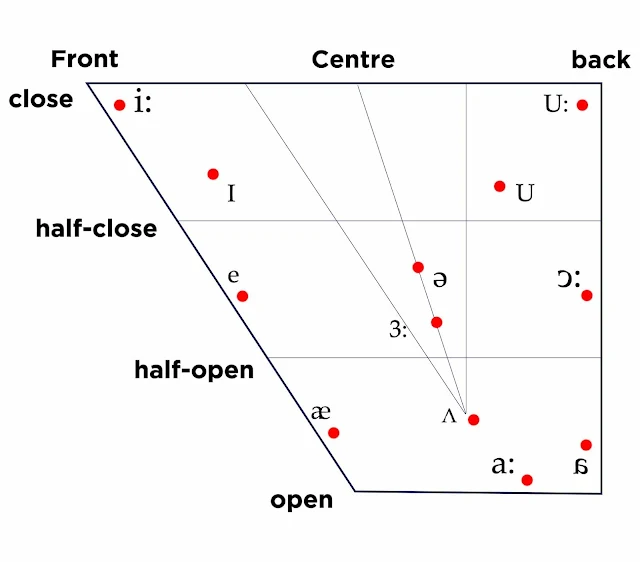 |
| Vowels | vowels words | English grammar |
Vowels
In phonetic terms, "vowels" are defined as the speech sound in the production of which there is, in the pharynx and the mouth, no obstruction or narrowing of a degree that would cause audible friction. Three major factors in the production of vowels are the openness or height of the mouth, the position of the words like :
- Seen - | siːn |
- Cut - | kʌt |
- Sit - | sɪt |
The Vowels are two types:
- Diphthongs
- Monophthong
There are 20 Vowels, 12 are pure vowels or monophthong, and 8 are diphthong.
Out of the 12 Pure vowels, four are front. five are back vowels and 3 are central vowels.
 |
| Vowels Chart |
Monophthongs or Pure Vowels
The Monophthongs can be divided into front, back, and central. The Monophthong is also called Pure vowels
- Four are front vowels : [ i:, I, e, æ ]
- Five are back vowels : [ a:, ɐ, u, ɔː, u: ]
- Three are central vowels : [ ʌ, ɜː, ə ]
Out of these, / iː, ɑː, ɔː, uː, ɜː / are long vowels and the rest short. Only four back vowels, / ɐ, u, ɔː, u: / are rounded, all the other monophthong are unrounded.
List of monophthongs
Diphthong
Di Means "Double" and "phthong" means "sound". So, a Diphthong means double sound. when the position of the tongue changes through a smooth tongue glide, the vowel produces is a diphthong.
out of eight diphthongs:
Three glides towards [ I ] :
Two glides towards [ U ] :
Three glides towards [ ə ] :
In the diphthongs glide towards [ I ], [ U ], the moment is towards the close position. So these are called closing diphthong and [ ə ] gliding towards the center of the vowel diagram is called centering Diphthong.


Post a Comment